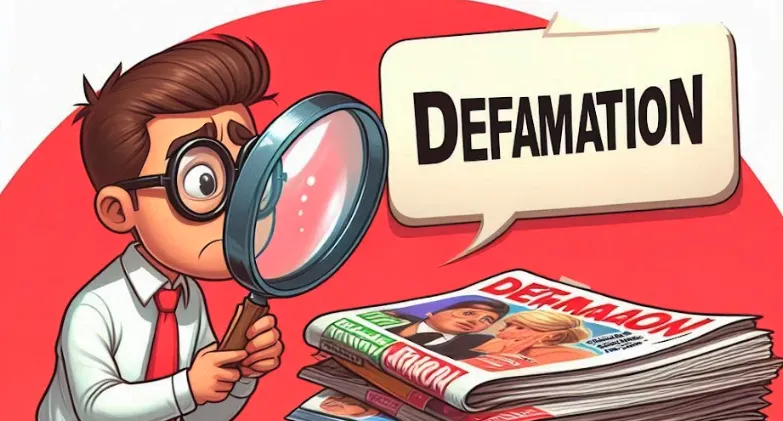What is Civil Procedure Code (Cpc) In India?
The Civil Procedure Code (CPC), 1908 is a set of laws that outline the process and procedures for civil litigation in Indian courts. It's like a guidebook that helps ensure that civil cases are handled fairly and efficiently. The CPC provides the rules and guidelines for how civil cases should be filed, conducted, and resolved in courts. It helps ensure that everyone gets a fair chance to present their case.
The CPC is divided into two main parts:
- Sections: These provide the basic rules and general principles.
- Orders and Rules: These provide detailed procedures for specific situations.
The CPC defines the jurisdiction of various civil courts, including District Courts, High Courts, and the Supreme Court. The CPC also has been amended multiple times to streamline procedures, reduce delays, and improve access to justice. Notable amendments include provisions for alternate dispute resolution (ADR) mechanisms, such as mediation and arbitration.
The purpose of this Article is to give an overview of the Civil Procedure Code in India, outlining its key features and functions in governing civil litigation.
HISTORICAL BACKGROUND AND ENACTMENT
The Civil Procedure Code (CPC) in India has a rich historical background that dates back to the British colonial period. Before the British established their legal system, India had a variety of local and customary laws governing civil disputes. However, these laws were inconsistent and varied from region to region.
advertisement
Early attempts at Codification:
- The first significant attempt to formulate civil procedures was the enactment of the Civil Procedure Code of 1859. This Code aimed to create a uniform set of rules for civil litigation, applicable across British India. However, it was not comprehensive and had several shortcomings, including inconsistencies and lack of clarity.
Enactment of the 1908 Code:
- Recognizing the need for a more robust and uniform legal framework, the British government enacted the present Civil Procedure Code in 1908. The CPC of 1908 was designed to provide a complete and detailed set of rules governing civil proceedings in Indian courts. It was influenced by English procedural laws but was adjusted to meet the specific needs and conditions of India.
Key Features and Impact:
- The 1908 Code was significant because it established a clear and consistent procedure for civil cases, covering everything from the filing of suits to the execution of judgments. It helped streamline the judicial process, making it more predictable and fairer for litigants.
advertisement
KEY PROVISIONS AND STRUCTURE OF CPC
Structure of CPC:
- Sections: These are the main body of the Code and include 158 sections. They cover general rules and principles related to civil procedure.
- Orders and Rules: The First Schedule of the CPC contains Orders and Rules. There are 51 Orders, each with several Rules that provide detailed guidelines on specific aspects of court procedures.
Key Provisions:
Jurisdiction of Courts (Sections 6 to 20):
- These sections define the types of cases different courts can hear, including their territorial and pecuniary (monetary) limits. For example, Section 15 states that a suit must be filed in the lowest competent court.
advertisement
Institution of Suits (Sections 26 to 35B):
- The CPC outlines how a civil lawsuit should be started. It includes guidelines on how to draft a plaint (the document an aggrieved party submits to start a case) and how to serve a summons(official notice) to the defendant.
- Section 26: A suit is commenced by filing a plaint (a written complaint) in the court.
- Section 27: Deals with the issuance of summons (an order to appear before court) to the defendant.
Pleadings (Order VI to VIII):
- These are formal written statements by the parties. The plaintiff's (aggrieved party) document is called a "plaint," and the defendant's response is called a "written statement." The CPC specifies what these documents should include:
- Order VI: Details the format and content of pleadings.
- Order VII: Specifies the particulars that a plaint must contain.
- Order VIII: Discusses the written statement (response) of the defendant.
Appearance and Examination (Sections 30 to 37 and Orders IX to XIII):
- It sets the rules for presenting evidence and examining witnesses in court. This includes how documents and other proof should be submitted and handled.
- Section 30 and Order XI: Allow for the discovery and inspection of documents.
- Order X: Covers the examination of parties by the court.
advertisement
Trial Procedure (Sections 101 to 103 and Order XVIII):
- The CPC details how trials should be conducted, including the order of presenting evidence, cross-examinations, and final arguments.
- Order XVIII: Outlines the procedure for the trial, including the examination of witnesses and arguments.
Judgement and Decrees (Sections 33 to 35B and Order XX)
- It provides guidelines on how the court should deliver judgments and pass decrees (the final order of the court).
- Section 33 states that the court will pronounce judgment and decree and Order XX specifies the contents and format of a judgment and decree.
Appeals and Reviews (Sections 96 to 112 and Orders XLI to XLVII):
- The Code allows parties to appeal against judgments and orders to a higher court. It also provides for the review and revision of decisions under certain conditions.
advertisement
Miscellaneous Provisions (Sections 148 to 153B and Order XLVIII):
- These include provisions related to court fees, costs, and the inherent powers of the court to make orders necessary to prevent abuse of the process.
Special Cases:
- The CPC includes provisions for special situations like summary suits (quick decisions for certain types of debts) and suits involving public interests.
JURISDICTION AND POWER OF CIVIL COURTS
The Civil Procedure Code (CPC) defines the powers and jurisdiction of civil courts in India. The underlying provisions ensure that civil disputes are handled efficiently and fairly, with each court knowing the extent of its authority and the types of cases it can hear.
The jurisdictions mentioned are:
advertisement
Territorial Jurisdiction:
This refers to the geographical area within which a court has authority. A court can only hear cases that arise within its defined territory. For example, if a dispute occurs in Delhi, it typically needs to be brought before a court that has jurisdiction over Delhi.
Pecuniary Jurisdiction:
It relates to the monetary value of the subject matter in dispute. Different courts have limits on the value of the cases they can handle. For instance, a small claims court may only handle cases involving smaller amounts of money, while higher courts can deal with larger sums.
Subject Matter Jurisdiction:
This refers to the authority of a court to hear cases of a particular type or relating to a specific subject matter. For example, some courts specialize in family law, while others may handle commercial disputes.
Civil courts derive their inherent powers from Section 151 of Code of Civil Procedure. This section confers inherent powers to the civil courts, allowing them to make orders necessary for the ends of justice or to prevent abuse of the court's process.
Powers of Civil Courts:
- Civil courts have the power to adjudicate (make decisions on) civil disputes. This includes disputes over contracts, property, family matters, and more.
- Courts can grant various types of relief, such as ordering one party to pay money to another, returning property, or stopping someone from doing something (injunction).
- Courts can summon witnesses to appear and give evidence. They can also require the production of documents relevant to the case.
- Before the final decision, courts can issue interim orders (temporary orders) to protect the rights of the parties. For example, they can issue temporary injunctions to prevent a party from taking certain actions during the trial.
- After hearing a case, a court passes a judgment, which is the final decision. A decree is the official order issued based on the judgment, specifying what each party must do.
- Courts have the authority to enforce their judgments. If a party doesn't comply with a decree, the court can take steps like attaching (seizing) property or garnishing wages to ensure compliance.
- Some courts have the power to hear appeals against the decisions of lower courts. This means they can review the case and either uphold, reverse (overturning/declaring null and void), or modify the lower court's decision.
advertisement
STAGES OF CIVIL SUIT UNDER CPC
Filing of the Plaint:
The process starts when the plaintiff (the person who initiates the lawsuit) files a plaint in the appropriate civil court. The plaint is a written complaint that states the facts of the case, the relief sought, and the legal grounds for the claim. The plaintiff must pay court fees, which vary based on the value of the claim.
Issuance of Summons:
After the plaint is filed, the court issues a summons to the defendant (the person against whom the suit is brought). The summons is an official notice that informs the defendant about the lawsuit and requires them to appear in court and respond to the plaint.
The summons, along with a copy of the plaint, is delivered to the defendant. This is called the "service of summons."
Written Statement by Defendant:
- The defendant responds to the plaint by filing a written statement. This document contains the defendant's version of the facts, defenses against the plaintiff's claims, and any counterclaims.
- The defendant typically has 30 days from the date of service of the summons to file the written statement, which can be extended up to 90 days with court permission.
advertisement
Framing of Issues:
- The court examines the plaint, written statement, documents to identify the points of dispute between the parties. These points are framed as "issues" and form the basis for the trial. Issues can relate to facts or law.
Discovery and Inspection:
-
Both parties are allowed to request documents or information from the other side that are relevant to the case. This process is called discovery.
-
Parties may also inspect documents or property relevant to the case.
Trial:
- The plaintiff and defendant present their evidence. The process starts with the examination, where witnesses provide their testimony (their version of the facts)
- After examination, the opposing party can cross-examine the witnesses to challenge their testimony. After cross-examination, the party who called the witness may re-examine them to clarify any issues raised during cross-examination.
Arguments:
- Once the evidence is presented, both parties make final arguments. They summarize the evidence and explain why the court should rule in their favor.
advertisement
Judgement and Decree:
- The court delivers its judgment, which is the final decision on the issues presented. The judgment includes the court's findings, reasoning, and the relief granted, if any.
- A decree is the formal expression of the court's decision. It specifies the outcome and any orders for action, such as payment of damages.
Execution of Decree:
- If the losing party does not comply with the decree, the winning party can apply to the court for execution. This may involve seizing property, garnishing wages, or other methods to enforce the decree.
APPEALS, REVISIONS AND REVIEWS
The Civil Procedure Code (CPC) in India provides mechanisms for challenging or reconsidering judgments passed by civil courts. These mechanisms are appeals, revisions, and reviews.
Appeals:
- If a party is dissatisfied with the judgment, they can appeal to a higher court. The appeal must be based on specific grounds, such as errors in law or procedure.
- Filed in a High Court, only on specific questions of law, against the first court's decision.
- There are specific time limits for filing appeals, usually within 30 to 90 days from the date of the judgment or order.
advertisement
Revisions:
- In certain cases, a higher court can change a decision made by a lower court if there was a mistake in understanding the law or if the lower court didn't have the right authority to make that decision. This process is called a revision, where the higher court checks if the lower court's decision was correct and lawful.
- The scope of revision is narrower than an appeal. The court focuses only on correcting legal errors rather than re-evaluating the entire case.
- Revision is typically used when a lower court has made a jurisdictional error or committed a significant error in law that affects the case's outcome.
Review:
- A review is a request made to the same court that passed the judgment to reconsider its decision. It is used when there are new facts, errors, or apparent mistakes that were not considered earlier.
- Grounds for Review:
- Discovery of new and important evidence that couldn't be presented earlier.
- Apparent mistakes or errors on the face of the record.
- Other sufficient reasons, such as an error in the application of law.
- The court can confirm, alter, or reverse its original judgment after the review.
advertisement
RECENT AMENDMENTS TO STREAMLINE CIVIL LITIGATION
- Electronic Filing and Virtual Hearings:
- The CPC now includes provisions for the electronic filing of pleadings and documents. This makes it easier for parties to submit documents and reduces the need for physical presence in court.
- Courts can conduct hearings through video conferencing, which is especially useful in situations where physical attendance is difficult or impossible.
- Summary Judgement:
- The CPC now includes provisions for summary judgment, allowing courts to decide a case without a full trial if it finds that the case is clear-cut and does not require a detailed examination of evidence. This helps in disposing of cases quickly where there is no real dispute. Summary Judgement in CPC
- Reduction of Adjournments:
- The amendments restrict the number of adjournments a party can request during the trial, thereby reducing delays. Courts are encouraged to impose costs on parties that seek unnecessary adjournments.
- Expedited Trial for Commercial Disputes:
- Special provisions have been made for the speedy disposal of commercial disputes. These include the establishment of commercial courts and special benches in High Courts, and setting strict timelines for various stages of the trial.
- Cost Implications:
- The amendments emphasize the imposition of actual and realistic costs on the losing party, which serves as an example against unnecessary litigation and delays.
advertisement
FREQUENTLY ASKED QUESTIONS (FAQs)
1. How do I start a civil case?
To start a civil case, you need to file a plaint in the appropriate civil court, outlining your complaint and the relief you seek. You must also pay the required court fees.
2. What is a plaint?
A plaint is a written document submitted by the plaintiff (the person starting the lawsuit) that explains the facts of the case, the legal grounds for the claim, and what the plaintiff wants the court to do.
3. What does it mean to execute a decree?
Executing a decree means enforcing the court's final order, such as recovering money or property, if the losing party does not comply voluntarily.
4. What are court fees?
Court fees are charges paid by the plaintiff to file a case in court. The amount varies based on the value of the claim and the court where the case is filed.
advertisement
REFERENCES

Written by Shubhankar Krishnan
A Delhi University graduate and a 1st Year Law Student, gaining experiences in areas under General Corporate, litigation and Intellectual Property Rights.
advertisement
Further Reading
advertisement






